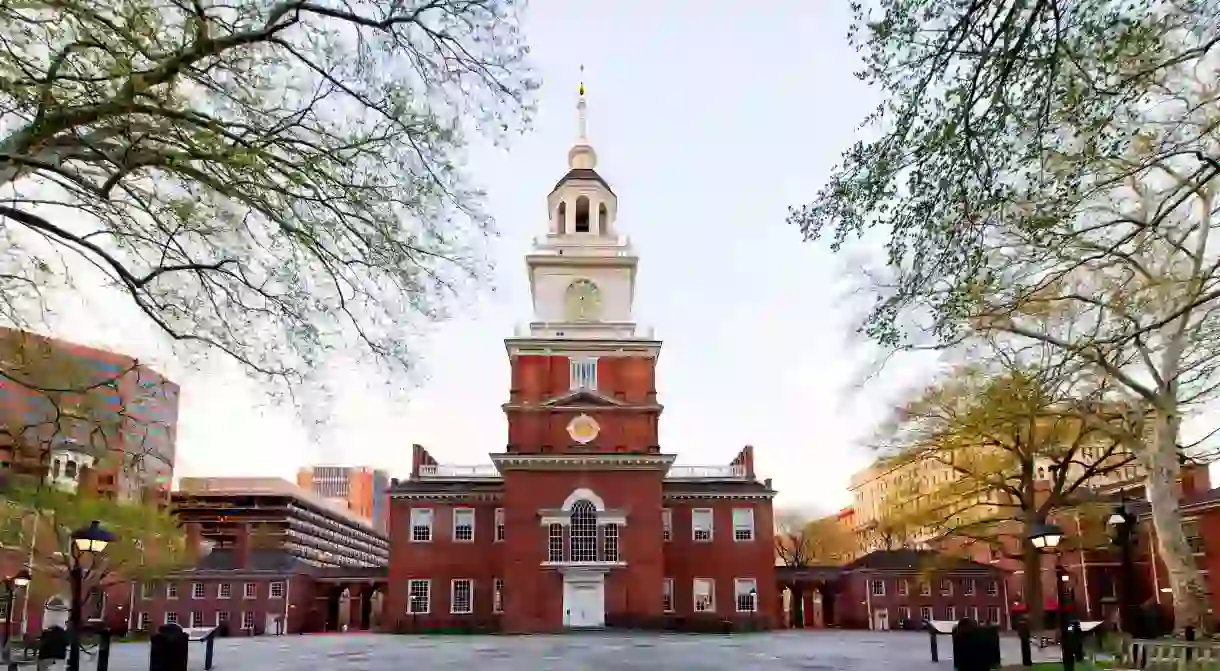Historical Monuments in Philadelphia

Philadelphia, the City of Brotherly Love, plays an immense role in America’s history, so it only makes sense that there are a numerous historic sites in the city that are worth your attention.
Philadelphia, also known as the birthplace of America, is Pennsylvania’s largest city. During the American Revolution, it was the meeting place of the Founding Fathers, where they signed the Declaration of Independence and the Constitution. Until 1800, it was temporarily the nation’s capital while Washington DC was under construction. There’s a great deal to see, but luckily a large number of the notable houses, government buildings, museums and cemeteries are gathered together in the “most historic square mile in America”: Independence National Historical Park. Here, we help you navigate these attractions, from the more well-known to the slightly more peculiar. History has never seemed so fresh.
The Liberty Bell
Architectural Landmark, Historical Landmark

Previously known as the State House Bell, the Liberty Bell is a symbol of America’s independence. It hung in the tower of the Pennsylvania State House and was used to call lawmakers to legislative sessions and alert townspeople about public meetings. The bell cracked when it was first rung and was melted down to be recast. How it got the crack you can see today wasn’t recorded. At the Liberty Bell Center, you can get close enough to read the engraved inscription: “Proclaim Liberty throughout all the land unto all the inhabitants thereof.” Entrance is free, and tickets are not required, but be warned – during peak season, lines can be lengthy.
The President’s House
Architectural Landmark, Historical Landmark
Presidents George Washington and John Adams both lived on this site during their terms. The Founding Fathers struggled to attain freedoms for the nation, yet Washington bought at least nine slaves to serve the household just one block from Independence Hall. It now houses a 24-hour, open-air exhibit for quiet reflection and contemplation, a chance to honor those who labored there. President’s House: Freedom and Slavery in the Making of a New Nation includes video vignettes, timelines, foundations of the house and a glass vitrine that houses archeological fragments found in 2007.
Independence Hall
Building
The Rocky Statue and Steps
Architectural Landmark

Perhaps not as historic as the Liberty Bell, but no less iconic, are the steps of the Philadelphia Museum of Art, forever immortalized by Sylvester Stallone in the classic movie Rocky. Work off all those tasty cheesesteaks by climbing the steps and punching the air in victory (if you haven’t watched the movie, that’s now your homework). The Rocky statue, originally created for Rocky III, was donated to the city by Stallone in 1982 and stands at the bottom of the steps.
Edgar Allan Poe National Historic Site
Museum
Christ Church Burial Ground
Historical Landmark
While exploring a graveyard might not be on everyone’s sightseeing list, this one is worth it for its notable “residents.” Benjamin Franklin is buried here, along with this wife, and four other signers of the Declaration of Independence. Traditionally, visitors toss a penny on Franklin’s tombstone in honor of his phrase “A penny saved is a penny got.” The cemetery is open March through November, Monday to Saturday from 10am to 4pm, and on Sundays from 12pm to 4pm.













